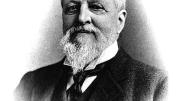Distributions from the endowment now make up the largest source of Harvard’s operating revenues: $855 million, or 31 percent of University income, in the fiscal year ended June 30, 2005. So the Corporation’s annual decision on how much money to make available from the endowment is of pressing importance to the faculties. In the current fiscal year, a new two-tiered distribution formula yields a “base” 4 percent increase, plus as much as 4 percent more for agreed-upon “incremental” spending plans negotiated by deans and President Lawrence H. Summers (see “The Payout Payoff,” March-April 2005, page 61).
Apparently satisfied with this approach, the Corporation in November again authorized a stepped increase in the distribution. For fiscal year 2007, beginning July 1, faculties can expect a 5 percent general increase in funds received, plus as much as 6 percent more for the targeted priorities. According to Ann E. Berman, vice president for finance and chief financial officer, the Corporation also issued “planning guidance” for fiscal years 2008 through 2010. The base distribution would rise 4 percent annually; the incremental distribution would be 4 percent in 2008, declining levelly to half that by the end of the three-year period.
In an interview, Berman noted that the richer distribution for 2007 is driven by the current low payout—the percentage of endowment market value distributed—which is, in turn, “driven by the endowment results.” Very high returns on endowment investments in the late 1990s and the successful University Campaign (which raised $2.6 billion) prompted very large distributions to fund University operations. When returns turned negative in fiscal years 2001 and 2002, as Summers took office and began to set new priorities, the distribution was slashed to a low-single-digit rate of growth. Now, following double-digit investment returns for three consecutive fiscal years, the payout rate for 2006 has fallen to 4.3 percent of endowment value—the lowest figure since 2001, and below the Corporation’s long-term goal of 4.5 to 5.0 percent. If the faculties are able to make full use of the base and incremental distributions in 2007, Berman said, the rate could rise toward 4.6 to 4.7 percent, assuming normal endowment investment returns.
This year, she said, the incremental funds have been applied to financial aid in every school. In addition, the funds were used to add faculty, or to boost faculty support (for example, in the form of summer research monies and resources for international work). Focusing on these priorities, she said, demonstrates that the University is using its available funds in a targeted way, before prospective donors in a future capital campaign are asked to lend additional support toward such goals.
To enforce that discipline, Berman disclosed, the incremental distributions come in the form of a separate pool of money each year, and will be similarly segregated in subsequent years, rather than rolling into each faculty’s main stream of endowment revenue. In this way, the extra funds will have to remain dedicated to the purposes deans and the president negotiate, so long as the Corporation hews to the two-tiered system of distributing money to the schools.





